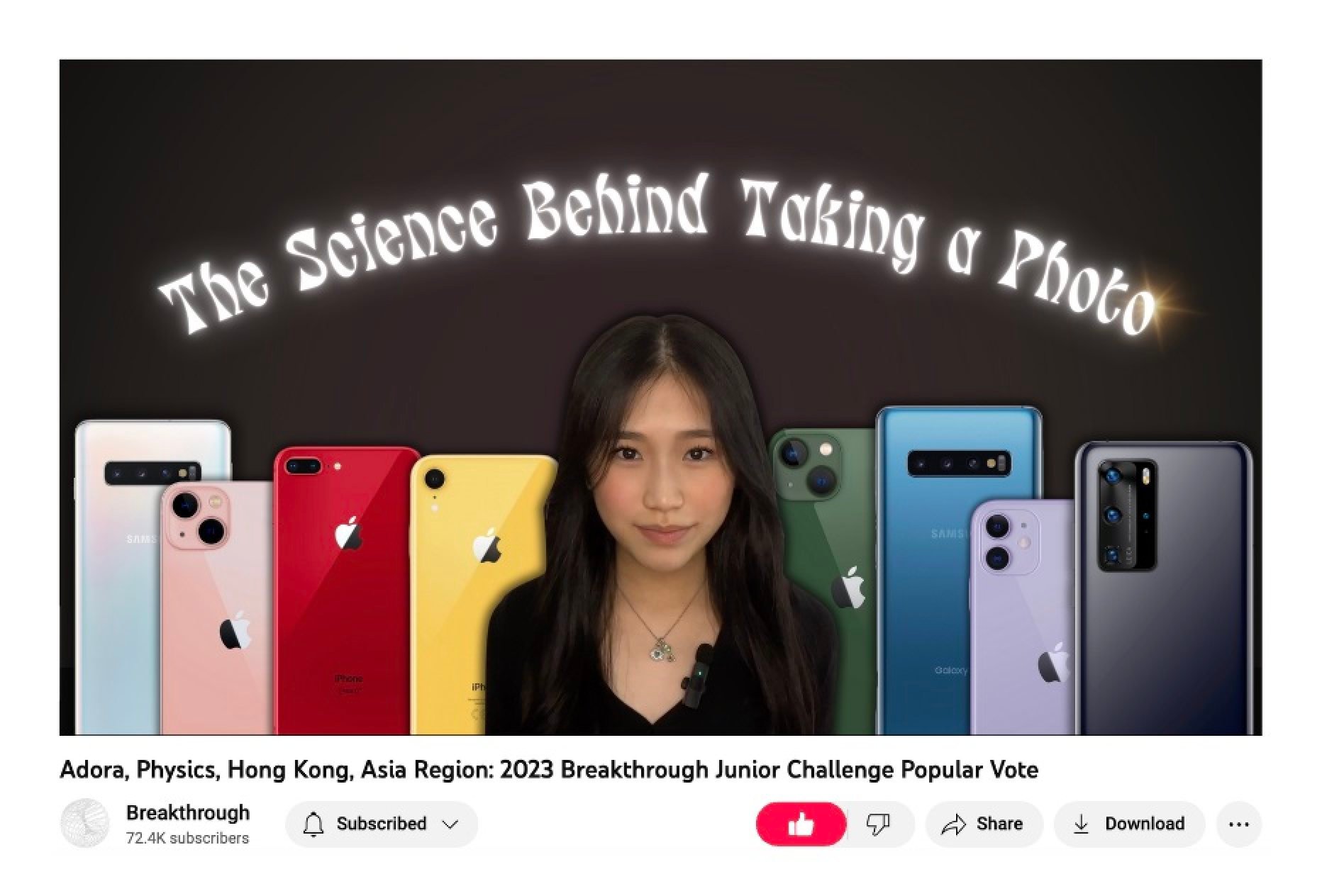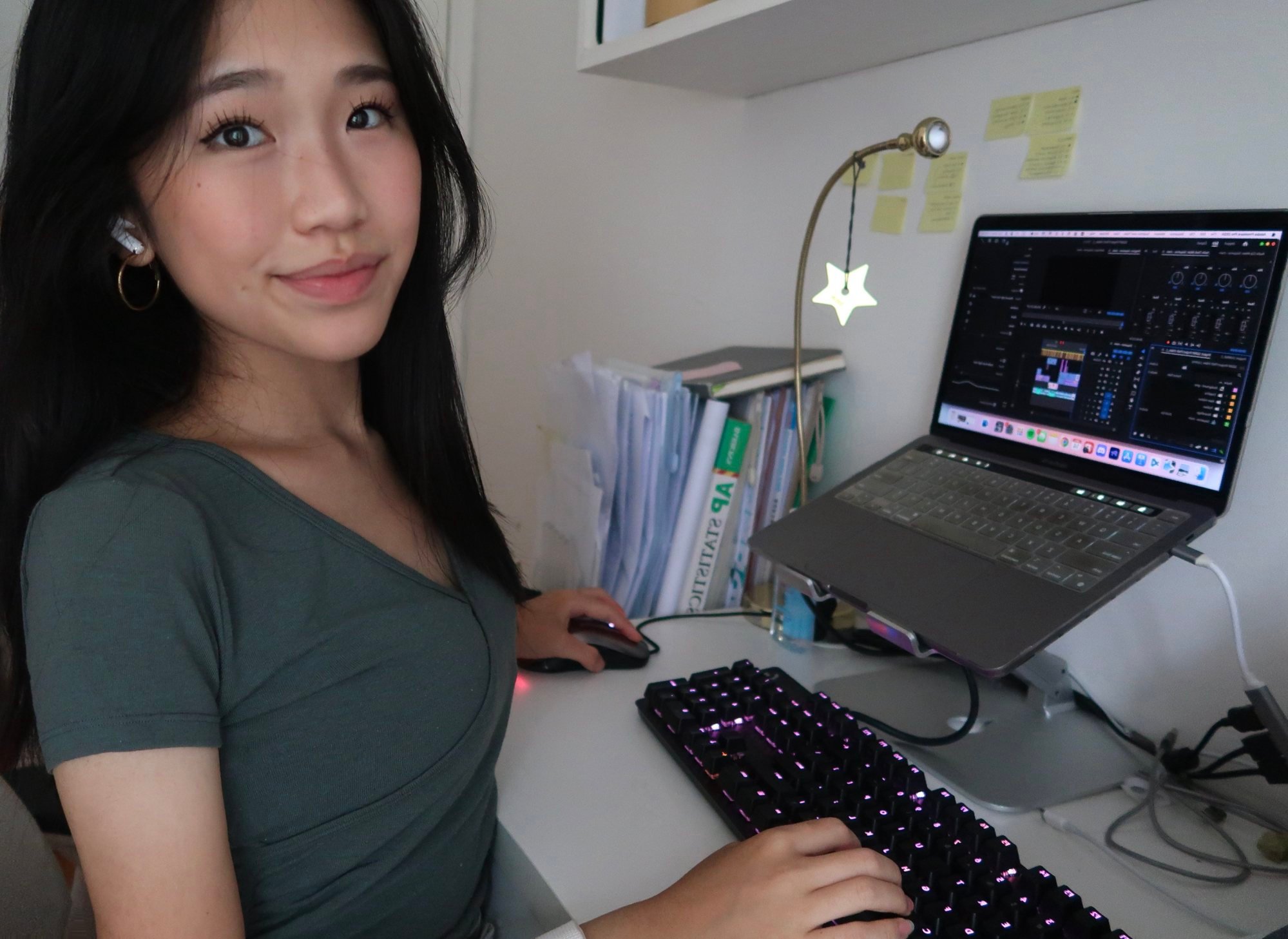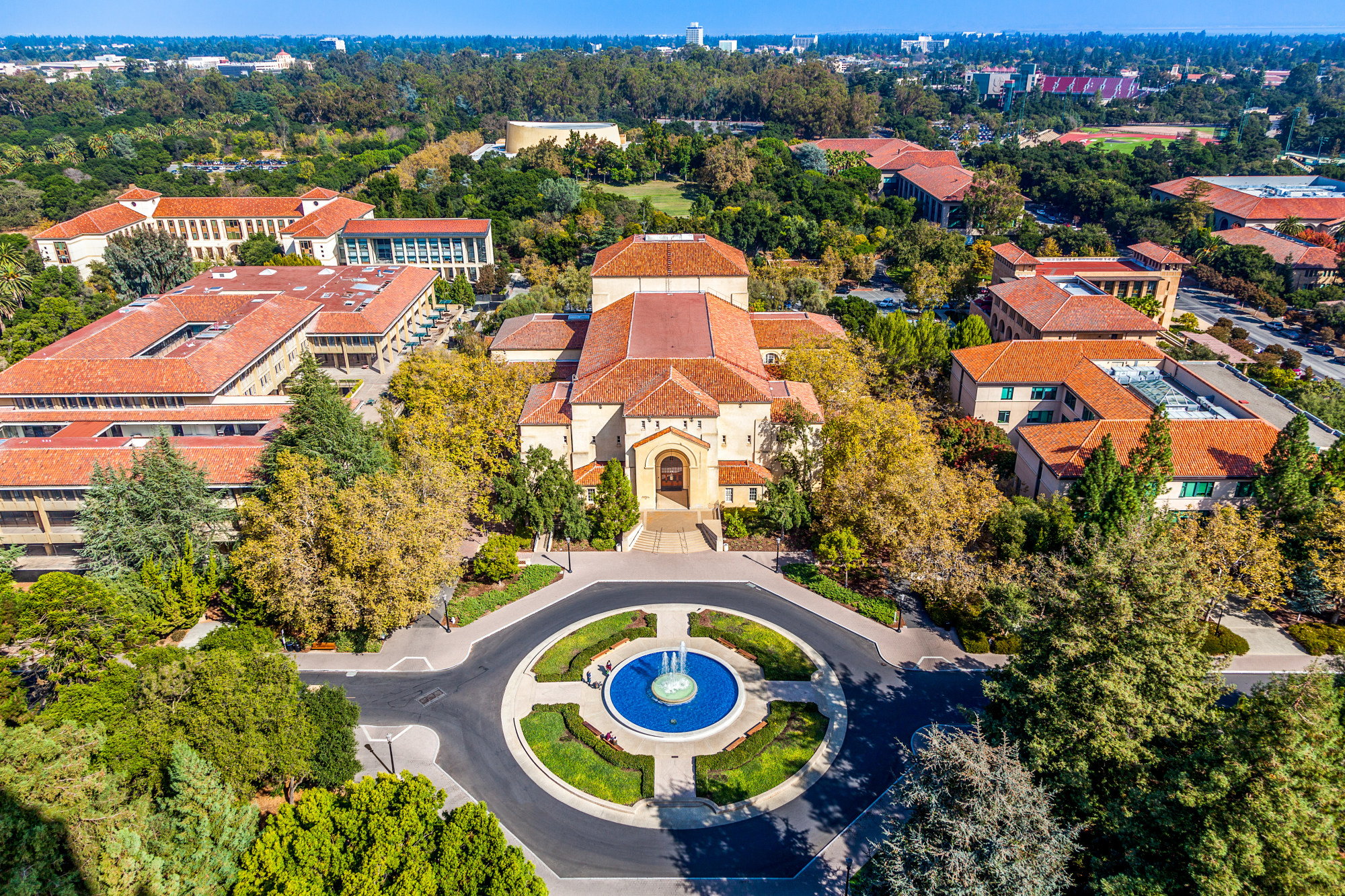
Where Spielberg meets Einstein: 15-year-old GSIS student makes it to finals of the Breakthrough Junior Challenge – the winner for the global science video competition gets US$400,000
- Adora Yin’s video, The Science Behind Taking a Photo, breaks down the technology that allows people to take high quality photos on their smartphones
- Previously, she had won an award at City University of Hong Kong’s Science Video Competition for making a video about the biology of human eyes
A self-described overachiever, 15-year-old science lover and German Swiss International School (GSIS) student Adora Yin manages to balance school life and two serious hobbies – tennis and video creation – whilst maintaining a healthy social life.
For her efforts, she has made it to the final 15 out of thousands of applicants in the Breakthrough Junior Challenge, a global contest that requires young STEM (science, technology, engineering and mathematics) enthusiasts to create videos that explain complex scientific concepts in creative and informative ways. Think: Steven Spielberg meets Albert Einstein.
Yin’s video, The Science Behind Taking a Photo, breaks down the vast engineering effort behind the technology that allows people to take high-quality photos in a fraction of a second on their mobile phones – something that many of us have come to take for granted.
“I’ve grown up with smartphones with cameras and I’ve always loved photography, and one day I actually took a step back to think about how photos could be taken so quickly and precisely,” says Yin, who is in her final year of IGCSE and will begin her IB studies next year.
“So then I started researching and found that the scientific principles behind this seemingly super-simple process was actually so much more complicated than I could ever imagine. I felt that it was almost underappreciated, so that gave me the idea to create a video to shed light on it and spread scientific knowledge in an interesting way.”

In just two minutes, Yin explains the physics, chemistry and engineering that goes into this culture-shifting technology, detailing a smartphone’s lens, image sensors, computer chips and algorithms, as well as the multiple complex scientific processes that take place in less than a second to create a photo. The video features Yin talking as well as 2D and 3D animations, and various eye-catching graphics and special effects which make the video highly engaging from beginning to end.
Just as impressive as Yin’s presentation skills is the fact that she wrote the script, created all of the animations and special effects, and did all of the video editing herself. She used Adobe After Effects to create special effects and 2D animations, Blender for 3D animations, and put it all together on Adobe Premier Pro. To top it all off, she taught herself to do all this from scratch.
“Though I’m definitely most passionate about science, video creation has always been a hobby of mine because it’s more artsy and creative,” she explains.
“I grew up in the digital age and I was always surrounded by video and social media and I guess that inspired me to learn and make videos for fun. But then I realised that videos are actually a great educational medium and it’s really powerful because you can really capture and captivate people’s attention.”

She admits that the video editing process for this competition was frustrating and tedious – because she’s also a self-confessed perfectionist: “It took up a lot of time and I had to pull an all-nighter towards the end but it was all worth it when I got to watch the final product. So I’m very proud of myself for doing all of that and I’m glad I got to be independent and creative in the process.”
If Yin aces the competition, she stands to win up to US$400,000 in prizes including a university scholarship, funds for a new science lab at her school, and a US$50,000 prize for the teacher who helped inspire her love for physics, and helped research and fact-check.
Yin learned about the competition after winning an award at City University of Hong Kong’s Science Video Competition the previous year for making a video about the biology of human eyes.
Going from a smaller local competition to a prestigious global one was a big jump for Yin, and she did not expect to make it this far. “It’s been really cool, and it’s forced me to step my game up,” she says.
“Girls are still quite under-represented in the STEM field. Even though the situation has improved in recent years, it’s still a bit of an issue
A passionate science lover for as long as she can remember, Yin is currently taking every science class available in the IGCSEs and intends to take Higher Level Physics and Computer Science when she starts the IB diploma next year.
“Science is definitely not just a career path but something I’ve always been passionate about from a young age,” Yin says. “I’ve always been curious about how things work and why things are the way that they are in the world around me.” She says she found many of the answers to her questions in science, leading to her passion for STEM.
In addition to attending one of Hong Kong’s top international schools, Yin is also a part-time second-year student at Stanford Online High School, a prestigious online secondary school affiliated with Standford University in the US. She learned about it while attending a summer camp called Standford AI for all.

“There actually isn’t much overlap between my Stanford and IGCSE classes. IGCSEs are more generic overviews of subjects, but my computer science class for Stanford is a lot more advanced and goes into the algorithmic side of things,” Yin says. She explains that she enjoys studying both syllabuses because after gaining a surface level understanding at IGCSE, she can explore deeper what interests her with Stanford.
Yin attributes her ability to balance so many challenging endeavours to her “innate sense of discipline” and an ability to not get too distracted by social media – an increasingly rare quality for teenagers nowadays.
“I’d say that I’m pretty diligent and good at keeping things organised, keeping my timetable all sorted and that’s how I manage to stay on top of everything,” Yin says. Although social media can be a distraction, Yin instead uses it primarily to connect with people and as an educational tool.
Yin is leaning towards going to the US for university, where she believes science and STEM career opportunities are most abundant. However, she says she is extremely excited and honoured to be representing Hong Kong, particularly as a young woman, on the world stage of STEM.
“Girls are still quite under-represented in the field. Even though the situation has improved in recent years, it’s still a bit of an issue, so being able to make it to the top 15 out of thousands of participants in this competition, I’m just really excited,” Yin says.
She hopes to encourage and inspire other young people, especially girls, to believe in their abilities and pursue a passion for STEM without any limitations from social stereotypes or traditional gender roles. “I know I’m only at the start but I hope if I keep going something big will happen.”
Yin says her parents always supported her and raised her to “disregard the gender stereotypes that are normally prevalent in Asian culture”. She also says she is grateful to one of her idols, the renowned Stanford computer scientist Fei-Fei Li, nicknamed the “godmother of AI”.
While Yin is interested in the idea of pursuing a career in AI and following in Li’s footsteps, she says she will continue to nurture her passion for video making, and educating people about interesting and complex scientific concepts through her YouTube channel @adorayin.
Yin’s video, The Science Behind Taking a Photo, can be found on her channel or on the official Breakthrough YouTube channel.
